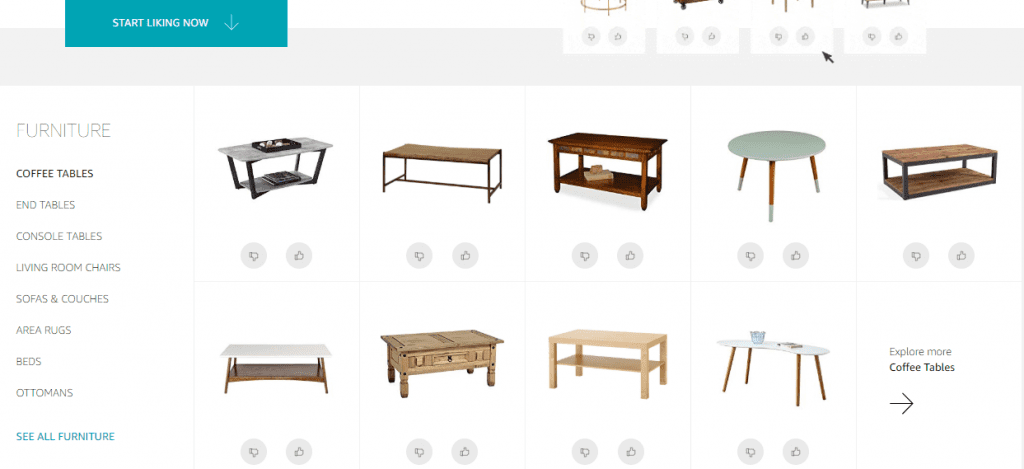Over the years, Amazon has built itself a pretty solid recommendation engine which analyzes your purchase history, and then suggests other products you might like — if you’ve previously bought a P G Wodehouse book, you’re shown more P G Wodehouse books; if you’ve purchased a Samsung phone, it shows you links to Samsung phone accessories. But Amazon’s looking to upturn this model by explicitly asking users what they like and don’t like, and then using this information to show them more relevant products.
Amazon’s testing out a new site called Scout, which shows users a bunch of items, and asks them if they like them or not. Users can either give products a thumbs up or thumbs down, and Amazon’s recommendations change in real-time. Scout seems to thus far be geared towards products where the visual appeal is an important part of the purchase decision, such as furniture, home decor items, and shoes. Amazon says it’ll be adding categories like fashion, handbags and toys.

Scout’s interface looks somewhat like Pinterests’, with items arranged neatly in rows and columns. Each item has at thumbs up or thumbs down next to it. Clicking on thumbs up changes some of the nearby items into the item you’ve liked — if, say, you give a thumbs up to a round dining table, there are instantly more round dining tables in your feed. A thumbs down to a product instantly removes similar products. Even though the results of every single like or dislike are instantaneous, Amazon’s recommendations, which are built with machine learning technologies, will likely become more sophisticated over time.
Scout seems to be a pretty dramatic shift from Amazon’s core shopping experience. Amazon has been great at showing up items that people need when searched from its search box, but its user interface hasn’t always been ideal for browsing though items. With Scout, Amazon will hope that people will digitally window shop through its site, and with their upvotes and downvotes, enable it to provide even better recommendations.
And it’s the moves of feed-based social media sites that seems to have prompted this change. Facebook is constantly focusing on its marketplace, and through the likes data it’s collected from its users, can show them in items that they might be interested in. Instagram has gone a step further — once a place to only browse for products and clothes, it’s now integrating e-commerce right within its app. Several startups are also looking to change how people buy items on the web — in India, a company called Charmboard lets users simply click on clothes they see in popular videos, and leads them to online marketplaces where they could buy them.
It’s still early days for these newer forms of e-commerce frontends, but it’s likely that they’ll eventually catch on. The way items have been sold only hasn’t changed in decades — there’s a search bar, and it throws up items that users explicitly want. With companies like Amazon now experimenting with newer interfaces around how shopping is conducted on the web, the online shopping experience could look very different in a few short years.
